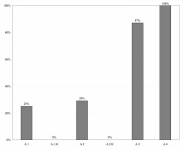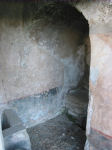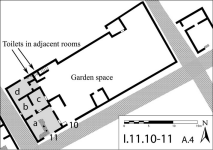
Figure 27: Percentages of Type A.3 bars with and without access to a neighbouring property.
The provision of a third room characterises the 23 examples of Type A.3 properties. Consequently the average size of this type increases to 57m², with the largest at VII.3.9 registering 87m², while the smallest examples are known at I.7.8 and VII.9.50, both of which were 38m². Only three examples (13%) maintained internal access through to a neighbouring property, though none of these were to domestic residences. This contrasts markedly with the smaller types as illustrated in the pie graph in Figure 27.

Figure 27: Percentages of Type A.3 bars with and without access to a neighbouring property.
Some differences may be recognised in the spatial organisation of fixtures and facilities for Type A.3 properties. The inclusion of a third room opened up opportunities for additional facilities, either for the customers' direct use, or to aid in the production and retail of goods and services. Cooking facilities are a notable example, with the hearths of ten of the Type A.3 bars located toward the rear of their premises (three of these bars also had a cooking facility in the front room: V.2.13; VI.1.17; VI.4.1-2).
One of the more striking characteristics of this type of bar is the provision of a toilet facility. These facilities for all types of waste removal were very often associated with cooking space, and particularly in combination with the hearths found in rear rooms. Toilet facilities were registered in 20 of the A.3 bars, 87% in all. This phenomenon contrasts very markedly with the smaller establishments, as demonstrated in the graph in Figure 28.

Figure 28: Percentage of toilet facilities among Type A properties.
The graph, Figure 28, demonstrates that toilets were rare among the single and double-room properties, and completely absent from properties attached to houses. This might be explained by the sharing of facilities, including toilets, among the bars with access to houses - a trend that we have noticed already. Otherwise, the provision of a toilet might not have been considered a necessary service of these smaller outlets. Public facilities were available elsewhere: public multi-seat toilets; amphorae located on several streets for urine collection (Martial, Epigrammata 6.93; see also Scobie 1986, 414); and even graves (Trimalchio was concerned that his own tomb would be defiled this way - Petronius, Satyricon 71.8) and statues are known to have gratified the needy. Were toilets at bars a facility for the public, it is possible they would have been multi-seat facilities, such as is known for work-shops and houses with large staffing arrangements (Jansen 1997, 125-6). What is certain, however, is that for the larger type of food and drink outlet we may now begin to recognise the use of internal facilities by customers, and not just street-side retailing activities. Of course it cannot be determined whether or not a toilet in a back room would have been reserved exclusively for members of staff and relatives. In only one example are two toilets registered on the ground floor. The bar at I.11.10-11 had a toilet accessible from further inside the property, and another one, adjacent to the first, but entered from the garden that could have been used by customers (see Figs 29, 30 and 31). But it is equally likely that both toilets could have been used both privately, and by public customers. Also, there are no definitive signs among the Type A.3 bars of rooms or spaces specifically set aside for the consumption of food and drink by customers, but the tendency toward the acceptance of customers into the premises seems more likely. Further, the structural characteristics of all properties of this size and larger suggest that such a tendency was likely in all of them.



Figure 29: The toilet off Room d at I.11.10-11, Pompeii. Originally closed with a door, the mechanism for which is still clearly visible in the threshold.
Figure 30: Second toilet at I.11.10-11, Pompeii. This toilet is adjacent to the garden area, closed by a door.
Figure 31: Bar at I.11.10-11, Pompeii. Note the two toilets.
© Internet Archaeology/Author(s)
URL: http://intarch.ac.uk/journal/issue24/4/6.1.5.html
Last updated: Mon Jun 30 2008